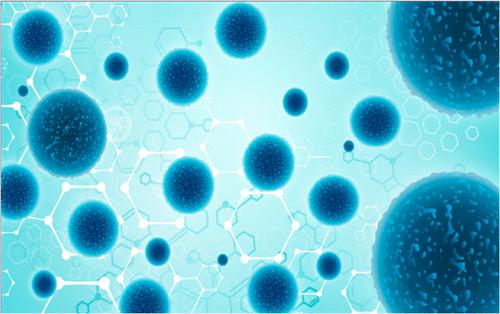当前位置:
X-MOL 学术
›
Acc. Chem. Res.
›
论文详情
Our official English website, www.x-mol.net, welcomes your
feedback! (Note: you will need to create a separate account there.)
Nanoparticles and Nanocolloidal Carbon: Will They Be the Next Antidiabetic Class That Targets Fibrillation and Aggregation of Human Islet Amyloid Polypeptide in Type 2 Diabetes?
Accounts of Chemical Research ( IF 16.4 ) Pub Date : 2022-09-29 , DOI: 10.1021/acs.accounts.2c00415 Sabine Szunerits 1 , Amar Abderrahmani 1 , Rabah Boukherroub 1
Accounts of Chemical Research ( IF 16.4 ) Pub Date : 2022-09-29 , DOI: 10.1021/acs.accounts.2c00415 Sabine Szunerits 1 , Amar Abderrahmani 1 , Rabah Boukherroub 1
Affiliation

|
Nanotechnology is revolutionizing human medicine. Nanoparticles (NPs) are currently used for treating various cancers, for developing vaccines, and for imaging, and other promises offered by NPs might come true soon. Due to the interplay between NPs and proteins, there is more and more evidence supporting the role of NPs for treating amyloid-based diseases. NPs can induce some conformational changes of the adsorbed protein molecules via various molecular interactions, leading to inhibition of aggregation and fibrillation of several and different amyloid proteins. Though an in depth understanding of such interactions between NPs and amyloid structures is still lacking, the inhibition of protein aggregation by NPs represents a new generation of innovative and effective medicines to combat metabolic diseases such as type 2 diabetes (T2D). Here, we lay out advances made in the field of T2D notably for optimizing protein aggregation inhibition strategies. This Account covers discussions about the current understanding of β-cells, the insulin producing cells within the pancreas, under diabetic conditions, notably increased glucose and fatty acid levels, and the implication of these conditions on the formation of human islet amyloid polypeptide (hIAPP) amylin oligomers and aggregates. Owing to the great potential of carbon nanostructures to interfere with protein aggregation, an important part of this Account will be devoted to the state of the art of therapeutic options in the form of emerging nanomaterials-based amyloidosis inhibitors. Our group has recently made some substantial progress in this regard by investigating the impact of glucose and fatty acid concentrations on hIAPP aggregation and β-cell toxicity. Furthermore, the great potential of carbon nanocolloids in reversing hIAPP aggregation under diabetic conditions will be highlighted as the approach has been validated on β-cell cultures from rats. We hope that this Account will evoke new ideas and concepts in this regard. We give some lead references below on pancreatic β-cell aspects and carbon quantum dots for managing diabetics and nanomedicine related aspects, a topic of interest in our laboratory.
中文翻译:

纳米颗粒和纳米胶体碳:它们会成为下一个针对 2 型糖尿病中人胰岛淀粉样多肽原纤维化和聚集的抗糖尿病药物吗?
纳米技术正在彻底改变人类医学。纳米粒子 (NP) 目前用于治疗各种癌症、开发疫苗和成像,NP 提供的其他承诺可能很快就会实现。由于 NPs 和蛋白质之间的相互作用,越来越多的证据支持 NPs 在治疗基于淀粉样蛋白的疾病中的作用。NPs 可以通过各种分子相互作用诱导吸附的蛋白质分子的一些构象变化,从而抑制几种不同的淀粉样蛋白的聚集和原纤维化。尽管仍然缺乏对 NPs 和淀粉样蛋白结构之间的这种相互作用的深入了解,但 NPs 对蛋白质聚集的抑制代表了新一代的创新和有效的药物来对抗 2 型糖尿病 (T2D) 等代谢疾病。这里,我们列出了 T2D 领域取得的进展,特别是在优化蛋白质聚集抑制策略方面。本报告讨论了目前对 β 细胞、胰腺内产生胰岛素的细胞、糖尿病条件下葡萄糖和脂肪酸水平显着升高的理解,以及这些条件对人胰岛淀粉样多肽 (hIAPP) 形成的影响的讨论胰岛淀粉样多肽寡聚体和聚集体。由于碳纳米结构干扰蛋白质聚集的巨大潜力,本报告的一个重要部分将致力于以新兴的基于纳米材料的淀粉样变性抑制剂形式的治疗选择的最新水平。我们小组最近通过研究葡萄糖和脂肪酸浓度对 hIAPP 聚集和 β 细胞毒性的影响,在这方面取得了一些实质性进展。此外,碳纳米胶体在糖尿病条件下逆转 hIAPP 聚集的巨大潜力将得到强调,因为该方法已在大鼠 β 细胞培养物上得到验证。我们希望该账户能在这方面激发新的想法和概念。我们在下面提供了一些关于胰腺 β 细胞方面和碳量子点用于管理糖尿病和纳米医学相关方面的主要参考,这是我们实验室感兴趣的主题。我们希望该账户能在这方面激发新的想法和概念。我们在下面提供了一些关于胰腺 β 细胞方面和碳量子点用于管理糖尿病和纳米医学相关方面的主要参考,这是我们实验室感兴趣的主题。我们希望该账户能在这方面激发新的想法和概念。我们在下面提供了一些关于胰腺 β 细胞方面和碳量子点用于管理糖尿病和纳米医学相关方面的主要参考,这是我们实验室感兴趣的主题。
更新日期:2022-09-29
中文翻译:

纳米颗粒和纳米胶体碳:它们会成为下一个针对 2 型糖尿病中人胰岛淀粉样多肽原纤维化和聚集的抗糖尿病药物吗?
纳米技术正在彻底改变人类医学。纳米粒子 (NP) 目前用于治疗各种癌症、开发疫苗和成像,NP 提供的其他承诺可能很快就会实现。由于 NPs 和蛋白质之间的相互作用,越来越多的证据支持 NPs 在治疗基于淀粉样蛋白的疾病中的作用。NPs 可以通过各种分子相互作用诱导吸附的蛋白质分子的一些构象变化,从而抑制几种不同的淀粉样蛋白的聚集和原纤维化。尽管仍然缺乏对 NPs 和淀粉样蛋白结构之间的这种相互作用的深入了解,但 NPs 对蛋白质聚集的抑制代表了新一代的创新和有效的药物来对抗 2 型糖尿病 (T2D) 等代谢疾病。这里,我们列出了 T2D 领域取得的进展,特别是在优化蛋白质聚集抑制策略方面。本报告讨论了目前对 β 细胞、胰腺内产生胰岛素的细胞、糖尿病条件下葡萄糖和脂肪酸水平显着升高的理解,以及这些条件对人胰岛淀粉样多肽 (hIAPP) 形成的影响的讨论胰岛淀粉样多肽寡聚体和聚集体。由于碳纳米结构干扰蛋白质聚集的巨大潜力,本报告的一个重要部分将致力于以新兴的基于纳米材料的淀粉样变性抑制剂形式的治疗选择的最新水平。我们小组最近通过研究葡萄糖和脂肪酸浓度对 hIAPP 聚集和 β 细胞毒性的影响,在这方面取得了一些实质性进展。此外,碳纳米胶体在糖尿病条件下逆转 hIAPP 聚集的巨大潜力将得到强调,因为该方法已在大鼠 β 细胞培养物上得到验证。我们希望该账户能在这方面激发新的想法和概念。我们在下面提供了一些关于胰腺 β 细胞方面和碳量子点用于管理糖尿病和纳米医学相关方面的主要参考,这是我们实验室感兴趣的主题。我们希望该账户能在这方面激发新的想法和概念。我们在下面提供了一些关于胰腺 β 细胞方面和碳量子点用于管理糖尿病和纳米医学相关方面的主要参考,这是我们实验室感兴趣的主题。我们希望该账户能在这方面激发新的想法和概念。我们在下面提供了一些关于胰腺 β 细胞方面和碳量子点用于管理糖尿病和纳米医学相关方面的主要参考,这是我们实验室感兴趣的主题。











































 京公网安备 11010802027423号
京公网安备 11010802027423号